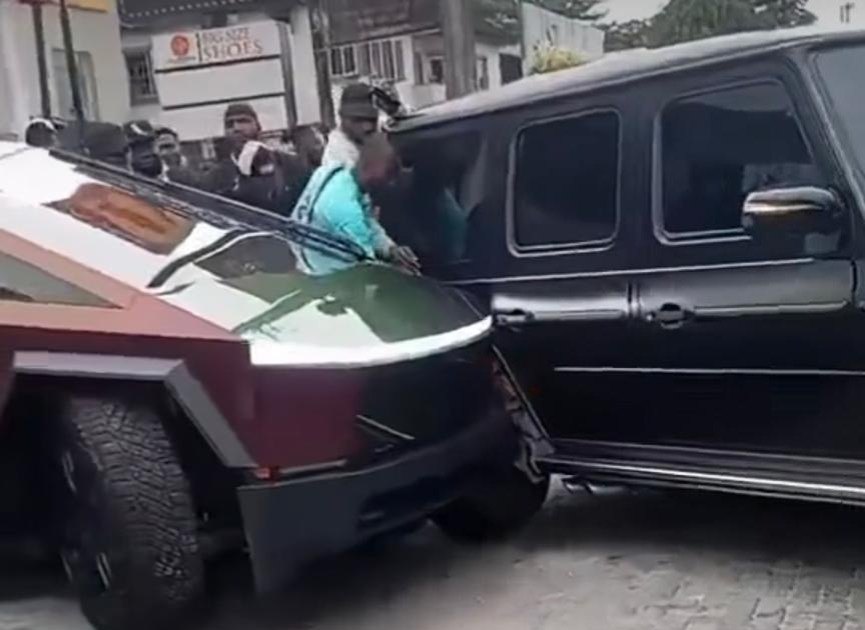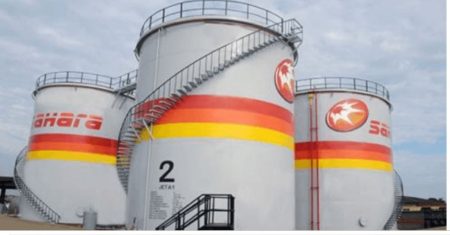The viral video of a collision between a Tesla Cybertruck and a Mercedes-Benz G-Wagon in Nigeria has ignited a flurry of reactions across social media platforms, highlighting the public’s fascination with luxury vehicles and the spectacle of wealth. The six-second clip, initially shared on X (formerly Twitter), depicts the aftermath of the accident involving the burgundy Cybertruck and the black G-Wagon. While details surrounding the incident remain scarce and no injuries have been reported, the online conversation has centered on the high-value nature of the vehicles involved, with many users expressing amusement and even admiration for the “luxurious accident.” The incident has underscored the stark contrast between the everyday realities of most Nigerians and the opulent lifestyles of the elite, triggering discussions about wealth disparity and the relatable struggles of ordinary citizens.
The online commentary accompanying the video largely revolves around the financial implications of the collision for the affluent owners. Users have speculated on the potential repair costs, the availability of parts, particularly for the less common Cybertruck, and the role of insurance companies in resolving the situation. Many comments reflect a detached amusement, with users expressing relief at not being involved in such a financially burdensome predicament. The incident has become a point of conversation not about road safety or the mechanics of the accident, but about the perceived problems of the wealthy, further emphasizing the socio-economic divide. The online discourse is peppered with Nigerian slang and humorous observations, reflecting the unique way in which the incident has resonated within the local context.
The collision also sparked discussions about the symbolic clash of these two high-status vehicles. Some users framed the incident as a battle of automotive “auras,” suggesting a symbolic competition between the owners’ displays of wealth. This interpretation adds another layer to the online narrative, moving beyond the purely financial aspects of the accident to encompass broader societal perceptions of status and prestige. The commentary also touched on the hypothetical reactions of the vehicle owners versus their drivers, suggesting that the response to the accident would likely differ depending on who was behind the wheel, potentially leading to either a civil exchange of information or a more heated confrontation.
Beyond the immediate reactions to the accident itself, the viral video has prompted broader reflections on the visibility of wealth in Nigeria and the public’s complex relationship with it. Many commenters have explicitly stated their disinterest in engaging with the problems of the affluent, emphasizing the irrelevance of such issues to their own lives. This sentiment reflects a wider recognition of the vast economic disparities within the country and a sense of detachment from the lifestyles of the elite. The incident has served as a stark reminder of these inequalities, highlighting the significant gap between the experiences of everyday Nigerians and those who can afford luxury vehicles like the Cybertruck and G-Wagon.
This incident echoes a previous report of a Cybertruck being damaged in Texas after being struck by a G-Wagon whose driver reportedly experienced a medical emergency. While the circumstances of the Nigerian accident remain unclear, the recurring involvement of these two specific vehicle types has added another layer of intrigue to the online discussion. The earlier incident, however, involved a parked Cybertruck and multiple other vehicles, distinguishing it from the apparent direct collision captured in the Nigerian video. The recurrence of these vehicles in accident reports, particularly involving the relatively new Cybertruck, might also spark conversations about the safety and performance of these vehicles in different driving conditions.
In conclusion, the viral video of the Cybertruck and G-Wagon collision in Nigeria has transcended a simple traffic accident, becoming a social commentary on wealth, status, and the public’s perception of the elite. The online reaction reveals a complex mix of amusement, detachment, and a recognition of the vast economic disparities present in Nigerian society. While the specifics of the accident remain unknown, the incident has sparked a broader conversation that extends far beyond the damaged vehicles themselves, providing a glimpse into the social and economic dynamics of the country. The incident also highlights the power of social media in amplifying such events and shaping public discourse around them, transforming a seemingly minor traffic incident into a viral phenomenon with wider societal implications.














